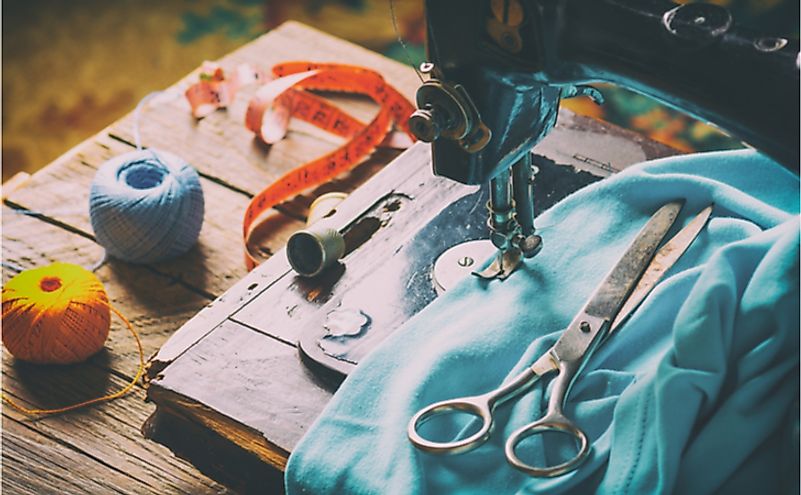Who Invented the Sewing Machine?

Sewing is a craft or art that dates back to the prehistoric period. Sewing needles were mainly made from bones, sticks, or animal horns, while the thread was made from animal sinew or skin cut into small strands. The iron needle was invented in about the 14th century, and eye needles began appearing a century later. Sewing as art has experienced several stages of improvement, including designs, methods, and implements used. An important invention of the Industrial Revolution was the sewing machine, which greatly improved the productivity and efficiency of the clothing and textile industry. Sewing machines are broadly divided into home and industrial sewing machines. Industrial sewing machines are much larger than home sewing machines.
Invention Of The Sewing Machine
The first British patent for a mechanical device to assist in sewing was given to Charles Fredrick Weisenthal in 1755. The German-born engineer was granted a patent for a double-pointed needle which had an eye on one end. However, not much is known about the device. The first person to be granted a patent for the sewing machine was English inventor Thomas Saint in 1790. Saint’s machine was meant to punch holes in canvas and leather. However, it is not known whether he built a working model of his invention.
In 1804, James Henderson and Thomas Stone built a sewing machine that employed the same mechanism as hand sewing. That same year, John Duncan was granted a patent for an embroidering machine that used several needles. However, the two machines did not do much and were quickly abandoned. In 1818, John Knowles and John Adams invented America’s first sewing machine, which also was not a major success.
First Functional Sewing Machine
The first functional and widely-used sewing machine was created in 1829 by French inventor Barthelemy Thimonnier. The machine, like Saint’s model, used chain stitches to sew straight seams. Thimonnier was issued a patent for his sewing machine in July 1830 and opened the world's first machine-based clothing company the same year. The company primarily made uniforms for the French Army. However, Thimonnier's garment factory was raided and burned to the ground, allegedly by French tailors who feared they would lose their livelihoods to a new factory. Thimonnier’s sewing machine was made of wood and used a barbed needle. The needle passed through the garment, grabbing the thread below and pulling it up to make a loop, which is locked by the next loop.
Later Inventions
In 1832, Walter Hunt developed America’s first functional sewing machine. However, Hunt did not patent the machine, claiming that a patent would render many people jobless. In 1845, Elias Howe created a sewing machine similar to one invented the previous year by John Fisher. The machine had a needle with an eye that created a lockstitch. Howe's idea was adopted by several others, including Isaac Merritt Singer. Singer’s machine is considered the first sewing machine to be successfully sold. The machine’s needles moved up and down and were powered by a foot pedal. When Howe learned of Singer’s machine, he successfully sued Singer for patent infringement. The Singer Sewing Company was the first company to develop an electric sewing machine, which was introduced in 1889. By the end of World War I, Singer was the main distributor of electric, treadle, and hand sewing machines.











